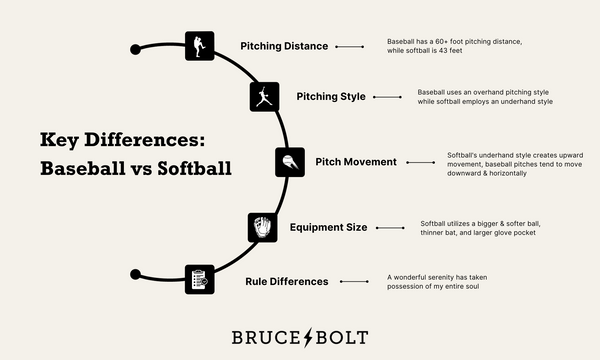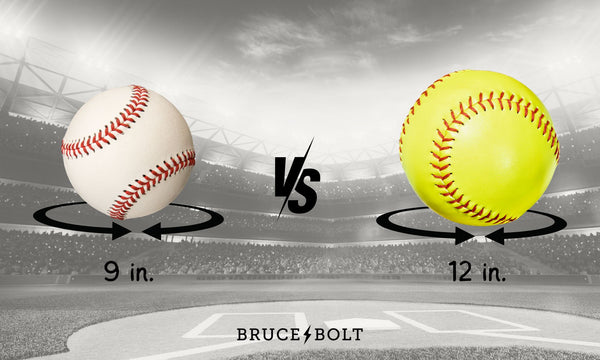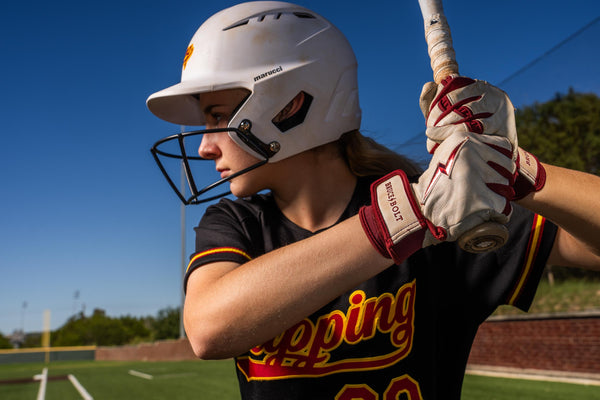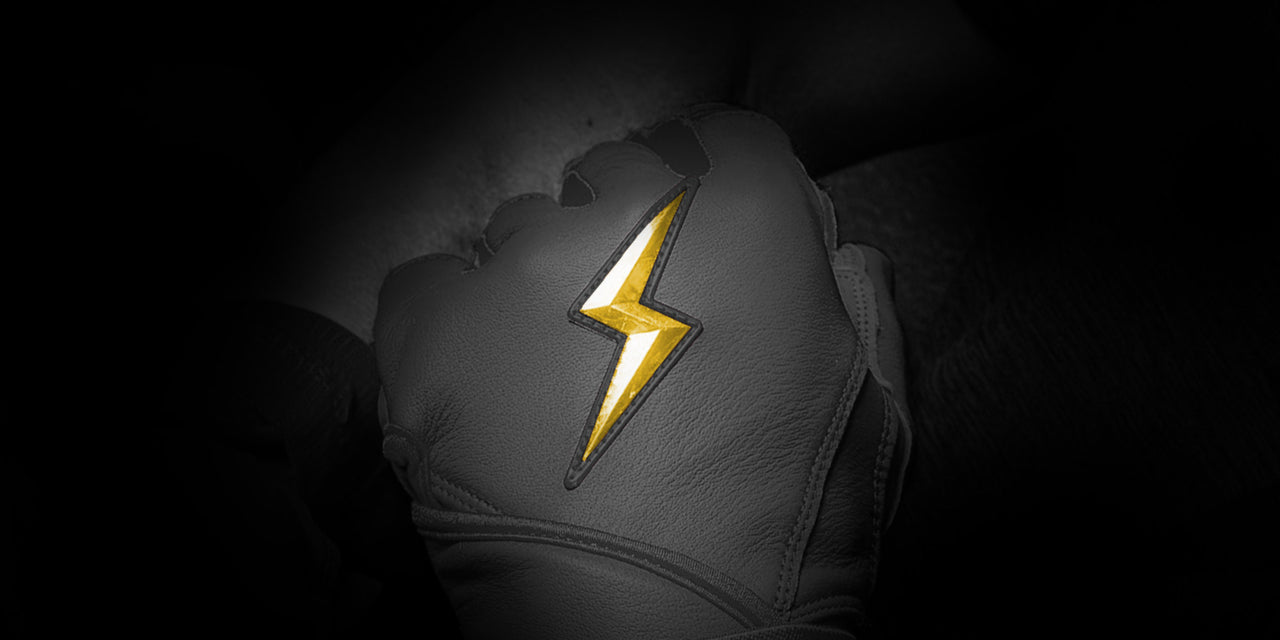Many people like to debate the differences between softball and baseball. So what sets them apart? At first glance, it might seem like the differences are minor, but they are distinct sports with unique rules and strategies. To put it simply, softball uses a larger ball and shorter field dimensions, while baseball plays with a smaller ball and larger field. Both sports demand high levels of skill and physical fitness but differ greatly in aspects like pitching style and pace of play. Today, we will dive deeper into these differences and explore which sport poses more of a challenge.
The Key Differences Between Softball & Baseball
Diving into the heart of softball and baseball, we are going to look at what truly sets them apart (for the sake of this debate, we are going to focus on the more competitive fastpitch softball rather than slow pitch softball). This isn't just a matter of ball size or field layout. It's about how these elements shape each game, crafting distinct playing styles and experiences. Let's break down the main differences in more detail.

Softball vs Baseball: Ball Size and Field Dimensions
A regulation softball is significantly larger than a baseball, demanding a different swing approach from players. This isn't simply about adjusting to its size; it's about how it influences the game's pace and style. The larger ball impacts the proper swing plane, calling for softball hitters to have a more exaggerated upswing to get the ball in the air. This is different from baseball where hitters aim to put a level swing on the ball and create backspin to carry the ball further. Hitting this smaller target also requires a type of hand-eye coordination that's uniquely challenging.

The two playing fields, while shaped the same, are also greatly different in size.
Baseball field metrics are as follows:
- Distance to centerfield (can vary by ballpark): 400 ft
- Distance between bases: 90 ft
- Mound to plate distance: 60 ft, 6 in
Softball field metrics are as follows:
- Distance to centerfield (can vary by ballpark): 220 ft
- Distance between bases: 60 ft
- Mound to plate distance: 43 ft
In baseball, the expansive field makes reaction times more important for players trying to reach a ball deep in the gap. The greater distance between bases, the pitcher's mound to home plate, and the outfield's reach all change the way the game is played in comparison to softball.
Softball vs Baseball: Equipment Variations
The equipment in softball and baseball is fine-tuned to suit each sport's specific needs. Softball bats are thinner and longer than their baseball counterparts, with players often opting for lighter materials to enhance swing speed and control. Baseball bats, on the other hand, are different in that they change as players progress through the ranks of competition. To explain, from Little League through High School baseball players (mostly) utilize an aluminum bat, resulting in more pop to aid their still-developing strength. Once players reach professional baseball, there is a shift to wooden bats. This is usually a player's first time using wood bats in a game (presenting a unique challenge) unless that player has played in higher levels of travel baseball that also require wooden bats.
To move on from bats, the pocket in softball gloves is larger, designed to handle the game's bigger ball. The variation in gloves between the two sports underscores the different challenges players face, from catching to fielding.

Softball vs Baseball: Playing Style
Pitching in softball and baseball offers a vivid illustration of the two sports' differences. Softball's underhand pitch (from a flat circle) contrasts sharply with baseball's overhand throws (from a raised mound). This fundamental difference in pitching styles influences the entire batting dynamic, altering how players and coaches strategize around the game.
The rules surrounding innings further distinguish softball from baseball. Softball's seven innings make having an ace starting pitcher even more effective. This differs from a baseball game which is 9 innings long, placing more of an emphasis on pitching rotation and a team's bullpen. These rules are more than just guidelines; they shape the flow and feel of each sport, contributing to their distinct identities.
Softball vs Baseball: Game Pace
Softball's compact field size leads to a comparatively quicker game. Players must be swift, both mentally and physically, as the shorter distances demand immediate responses. This pace influences strategies like slap hitting, where the aim is to place the ball strategically and get out of the box quickly rather than powering it into the outfield. However, softball players do not have to cover as much ground to get to the ball and the exit velo off of a softball bat is considerably slower, so there is give and take for the reaction time of both sports.
Softball vs Baseball: Comparing the Difficulty of Both Sports
While both softball and baseball share similarities, including their foundational skills and rules, the demands they place on athletes have some key differences.

Softball vs Baseball: Pitching Difficulty
Pitching in both sports is an art form requiring years of practice to master. Softball pitchers utilize an underhand motion, generating speed and movement from a flat plane. This technique, combined with the ball's size and the pitch's velocity, creates unique challenges for hitters. Baseball pitchers, employing an overhand throw from a raised mound, have a vast arsenal of pitches — each with different speeds and movements, demanding batters to have strong anticipation and decision-making skills.
Softball vs Baseball: Batting Difficulty
Batting in softball often emphasizes precision and speed. The strategy might involve slap hitting to exploit infield gaps or drag bunting to advance runners. In contrast, baseball batting can focus more on power and the strategic selection of pitches to hit, given the larger field and the need to cover more distance with each hit.
Softball vs Baseball: Fielding Difficulty
Softball's compact playing field requires infielders to have lightning-fast reflexes to respond to quicker batted balls, while outfielders must be prepared for fast, looping hits. Baseball's larger diamond and outfield requires strategic positioning and anticipation, with players often having to make long, accurate throws.
So Which is Harder?
Determining which sport is more difficult depends on individual perspectives and the specific skills of the athletes. Softball's intense pace and unique pitching style present one set of challenges, while baseball's strategic depth and physical demands offer another.
For those seeking further insights into this debate, read our blog on whether softball is harder to play than baseball!
Around the Horn: Softball vs Baseball
Wrapping up our dive into softball vs baseball, we've hit every base. From ball size to pitching mechanics, we saw how each sport plays its own game. Gear, rules, pace - they all contribute to what makes softball and baseball unique despite their many similarities. The big question, "Which is tougher?", really depends on who you ask. Both sports demand guts, skill, and mental toughness.


